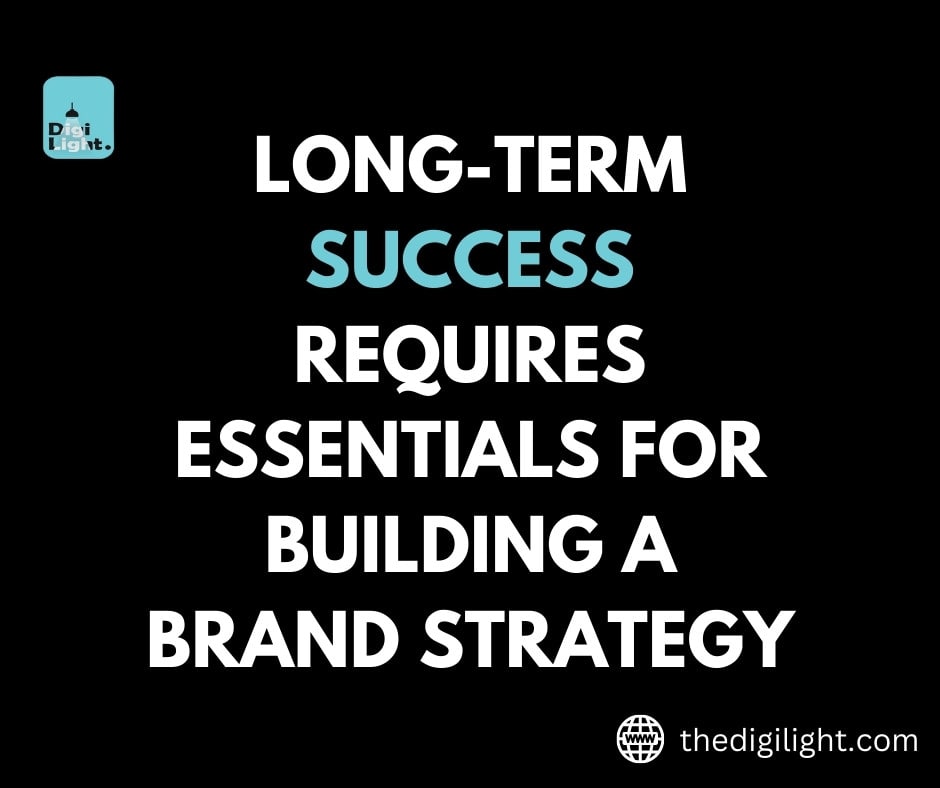A branding strategy is a long-term plan to achieve a series of long-term goals that ultimately result in consumers’ identification and preference for the company. A successful branding strategy for any business like a gym and skin aesthetic clinic encompasses the company’s mission, its promises to its customers, and how these are communicated.
New customers associate more with the company, helping drive purchasing decisions. A robust branding strategy should be well-formulated and executed across all business functions to achieve improved financial performance, competitive advantage, and customer experience.

Table of Contents
Toggle1. What is a Brand strategy?
A brand strategy that is defined and well-implemented affects all aspects of a company’s operations and is intimately linked to consumer needs, sentiments, and market competition.
A branding strategy is more than just your visual identity, such as your logo, color scheme, or website; these innovative, crucial elements are necessary for a fruitful branding strategy. A branding strategy is focused on all the intangible factors that ultimately support its equity, company sentiment, and business awareness.
All of the above and more make up your needs, these are the intangible components. Your business is that mysterious emotion that separates strong rivals from memorable ones.
To rationally understand a topic that many marketers consider to be more of an art than a science, we’ve broken down a unique brand strategy into seven essential components. These components can help keep your company relevant for decades.
2. What makes branding so crucial?
- The lifetime value of customers who emotionally engage with a team is 306% higher (LTV).
- Brand awareness, according to 84% of marketers, is the most crucial objective.
- Companies that have poor branding must pay 10% more in salary.
- Make sure your branding is consistent across all of the platforms and distribution channels you are present on. This is because 90% of customers expect a consistent experience across numerous channels.
- Engaging unique content engages users 22 times more than a typical display ad.
- Customers who are emotionally attached to your company have lifetime values (LTVs) that are 306% greater.
3. LONG-TERM SUCCESS REQUIRES ESSENTIALS FOR BUILDING A BRAND STRATEGY
The difference is the cornerstone of branding initiatives, which rely on the value proposition of the business to provide a competitive advantage and meet client demands. What does my market position mean?

A company’s value proposition and its goals are defined through branding. It also shows how these fundamental principles are put into practice in the workplace. Any marketing plan is more significant than just outlining your objectives.
4. WHY IS IT CONSIDERED ESSENTIAL TO HAVE A UNIQUE BRAND STRATEGY?
Strong gym businesses are necessary to cultivate customer relationships. A powerful branding strategy may promote referrals, repeat business, word-of-mouth marketing, and recognition.
Absent effective brand strategies, a company’s reputation may deteriorate or be forgotten. Without a standout product experience, buyers are likely to switch instead of engaging in repeat business (and even with one).
An efficient brand strategy can help you create a strong business. It focuses on your long-term goals and develops your company’s identity. It establishes a benchmark for measuring development: Without a business marketing and strategic plan, you cannot determine if your company is moving in the right direction.
5. The Importance it has:
Managing a company is made more challenging by being in a market that is oversaturated with businesses that are visually similar. One of the key components to expanding in a congested market is strategically showing what sets your company apart. Your company can be future-proofed and differentiated from competitors through strategic development. If you make an effort to convey your individuality to customers, they will be more loyal to you. Too fuzzy in your opinion? Here are a few benefits of brand strategy:
1. Focus On Marketing:
By clarifying the scope of your marketing objectives especially if you run a gym or dermatological clinic, you can make sure that marketing campaigns are carried out more efficiently and successfully. You are aware of the people you are attempting to contact, what is relevant to them, and how you intend to reach them.

Instead of wasting thousands of dollars A/B testing different strategies, you’ll achieve the target more rapidly and increase the investment return on your marketing efforts.
2. Develops Transparent and accountable
Like the preceding point, keeping a distinct brand strategy helps your business maintain accountability and keeps everyone focused on high-yield projects that will actually make a difference rather than meaningless busy labor. The strategy helps you stay on course and, in the event that you veer off, it makes it simpler for you to instantly refocus.
6. Way To Develop A Unique Brand Strategy:
It can be challenging to describe a brand development strategy, but it includes:
- What your company is known for.
- What guarantees does your business give to consumers?
- What personality does your brand’s marketing communicate?
As you can see, a lot of these concepts are abstract. How do you gauge how well you are able to portray a particular personality? How can you tell if you’ve successfully upheld the values that your company stands for or if you could be doing it more effectively?

Emotional sentiment is the sole key indicator of new business success. And just because something is difficult to determine doesn’t mean you should disregard it. Though it may be more difficult to quantify, analytical CEOs find it far too simple to discount the qualitative labor required for branding.
The creating of experiences is a separate portion of your brain from the scalability [of your experiences], as Airbnb CEO Brian Chesky made abundantly apparent. It requires a distinct skill set. A difficult analytical, operational, and technological challenge is scaling experiences. The designing of experiences is a more intuitive, end-to-end, human endeavor.
Despite what may seem unimportant, the two skill sets would be managed by two separate teams. They rarely interact, let alone agree on anything. You waste time, energy, and money this way. In a company, creative staff is usually present. Brian is adept at creating empires because he is aware of the key factors at play.
7. What factors play into a successful branding strategy?
An effective branding strategy’s major objective is to make the world aware of your company’s existence, its function, and what distinguishes it from competitors. A branding strategy is a flexible, long-term plan that frequently needs to be updated as it succeeds (or fails).
It might be challenging to assess a brand development strategy’s effectiveness. Intangible, difficult-to-quantify components are frequently a part of branding efforts, therefore it’s critical to define upfront how success will be measured.
Although each business may take a different approach to determine how to assess success, all will generally use the same components in their methods. A strong brand strategy can be created by first answering the questions below:
- What are the goals of your business, and how do you convey them?
- What issues will your address, and how will this help the target market?
- How do you find your ideal clients?
- From whom will the profit? What emotions do and would these customers desire to feel?
- How do you find your rivals—who are already providing what your potential customers want and how? and how do they do it?
- How do you entice prospective clients?
1. Goal:
Understanding why you get out of bed and go to work every day matters more than recognizing what your company promises when developing your brand image. In other words, your goal is more narrowly defined because it helps distinguish you from your competitors.
How might your company’s mission be described? According to Business Strategy Insider, there are two perspectives on purpose:
2. Convenient
Since the purpose of a business is to make money, this theory focuses on how success is determined in terms of practical and financial considerations.
3. Purposely
This concept emphasizes success in terms of the ability to generate income and advance society.
4. Consistency
The key to consistency is to steer clear of subjects that do not advance or relate to your team.
The Facebook page for your business recently got a makeover. What does it mean for your company? Is it in line with your message, or was it just a joke that would have, to be quite honest, confused your target audience?
To build a strong reputation for your business, your messaging must be consistent. In the end, consistency promotes client loyalty and aids brand awareness. There is no strain.
5. Emotional behavior
Why? People have a natural desire to engage with brands. The “belongingness hypothesis,” formulated by psychotherapists Roy Baumeister and Mark Leary, asserts that “people have a basic psychological need to feel intimately linked to others and that caring, doting bonds from intimate relationships are a massive aspect of human behavior” and that this need is best captured by “close relationships,” which foster close bonds between individuals.
Not to mention that the need for love, compassion, and a sense of community, collectively known as the need for belongingness, sits right in the midst of Maslow’s hierarchy of requirements, which attempts to categorize different human needs.
6. Employ Participation
As was previously mentioned, creating a sense of continuity is crucial to raising company recognition. Furthermore, while a style guide can help to create a consistent digital experience, it’s crucial for your personnel to be skilled at providing customer care. This is because they represent your business.
If your company is designed as vibrant and engaging through Twitter conversations, it wouldn’t make sense if a customer called in and was put in touch with a moody, monotone agent, would it? You must offer first-rate customer service to help your clients.
7. COMPANY LOYALTY
If your current clients adore you, your company, and your trademark, don’t do anything. Pay them for being a devoted customer. These customers have taken steps above and beyond to promote your business by writing about you, telling their friends about you, and expanding the target market for your company.

Early ongoing customer loyalty will lead to increased repeat business and huge financial gains for your business. Occasionally a simple “thank you” is all that is needed, and other times providing above and beyond is preferred.
Send them a letter that only you could write. Send them some thoughtful presents. When you ask for consumer feedback, make sure to prominently display it on your website. (Or all of them!)
8. The Adaptability of Business:
One of the pillars of creating a strong branding strategy is consistency, but some flexibility is also helpful. This is particularly true if you want to enter new markets. While consistency creates the standard for your company, flexibility allows you to adjust to market needs and differentiate your company from competitors.
A global identity is both recognizable and adaptable. Your trademark must adjust to the shifting preferences of customers. If not, it can end up becoming outdated.
9. CONSUMER AWARENESS
Use competition as inspiration to improve your strategy and boost the value of your company. You pursue the same clientele and work in the same sector, right? So keep an eye on what they do.

Do some of their tactics produce results? Do some people fail? Based on their experiences, adjust your brand positioning to improve your company.
8. Qualities of a Powerful Corporate Business:
What characteristics distinguish a strong brand for a business? It reaches beyond having the appropriate visual components or a compelling brand story. The elements needed to make sure you have the proper brand design in place to help your marketing plan are broken out below.
- Physical traits: At the most fundamental level, we have the physicality of your company – its aesthetics, such as your logo, typography, corporate colors, and other visual clues that aid consumers in distinguishing your business from a sea of rivals.
- What does your business have in terms of personality in the eyes of your customers? Is it witty and playful? Easy to understand and trustworthy? Inventive and artistic? How would your services or product be in the real world if it were a living thing?
- Cultural differences exist between company cultures. Here, we’re discussing how the set of values you uphold functions as the cornerstone of a business.
- Relationship: How do your customers and your business interact? What connection do the people who purchase your goods and services have with them?
- How do your customers see themselves in relation to your company? Are they more confident and better organized? Utilize this to give your ideas more substance and develop a distinctive visual identity that will change the way your clients view themselves.
- Consideration: How do you see your clients? How are they portrayed in your advertisements and other marketing materials?
9. Why do Graphics and Design Matter Most?
The visual depiction of your business on your products, digital advertising, and social media platforms is called brand design. Often, this is the simplest and quickest way for a potential customer in your target audience to understand what you stand for.
It could be represented by a chic sunscreen bottle, the label of a grocery store, or even appealing website features and shapes. Brand design not only communicates the core values of your business but also displays your point of view and degree of taste. The bright themes you use for email newsletters or the way you package and decorate your products could contribute to a potential customer’s love of your brandLike art, brand design can evoke emotions.s.
Lack of design may cause your trademark to lack a distinctive visual identity, which potential buyers will notice. Designing the aesthetic components of your business, from product labels to packaging embellishments to your webpage, may strengthen its position in the market. This will improve customer experience, create a strong visual identity, and make it stand out from competitors.
A brand guideline should also contain specifications for the tone of voice and brand identity. In terms of brand style, this comprises color, codes, font sizes and styles, logo use, and more.
10. Role Played By Brand Value:
Forging links with your community, locating existing customers with similar beliefs, and assessing whether a choice or partnership meets your company’s goals all depend on your company’s values. The values of a business can help with brand positioning and serve as a significant differentiator for you.
Branding guidelines, which work with a style guide, are widely used to formalize principles. Along with the stand with standardized and visual design, brand values may also include a business’s goal statement, an explanation of its core values, and suggestions on how to conduct oneself on social media and other content marketing platforms.
11. Brand Voice is Essential:
The language used by a business on its website, in other marketing materials, and in other dealings with current and potential customers is referred to as brand voice. The voice of a business determines the messaging it communicates. The key to building relationships with a customer base is typically to combine a brand’s personality with its core values.
The sarcastic best friend, the understanding professor, or the consoling doctor may all come to mind when you hear a strong brand voice. It sets the tone for the relationship that a customer will grow to have with a brand over time and shows the customer what to expect.
Your strategy should outline which touchpoints to highlight and at the very least provide a broad framework for your communication style. This includes your brand’s voice and tone as well as a specific message.
12. The Brand Vibe Should be as good as Yours:
The atmosphere of a company can be seen on its website, social media pages, product packaging, etc. A business’s vibe, which may be anything from fun to sarcastic to serious to amusing, is created by combining its personality, values, and physical appearance.
If you’ve ever been to a gym, you may have picked up on a certain atmosphere or spirit. Even though a lot of businesses today operate online, you can still affect how a customer feels when they interact with your business.
By creating a vibe, you can improve how customers interact with your business as a whole and create a more lasting, favorable impression.
CONCLUSION:
The fact is that a well-developed brand development strategy can help and guide your business. It reveals your company’s position in the market in relation to your competitors and what makes it stand out from the pack.
If you adopt the right mindset, color scheme, voice, and activities, your team and prospective customers will find your business more alluring.
The following are the key lessons to remember about branding strategy in 2022:
- You must conduct research and gain insights into your customers.
- You need to be aware of the values and origins of your company.
- Create a compelling narrative and understand how it relates to your consumers.
- Before you launch any marketing initiatives, you must base your marketing strategies on knowledge of your target audience and the values of your business.
- Both effective management and organizational skills and outstanding creativity are needed. They are usually in different buildings and are different people.
- When it comes to innovation and strategic branding/brand positioning, don’t be hesitant to turn outside your organization for assistance. For precisely that reason, the top companies in the world deal with advertising and creative agencies.
- It is both simple and intricate. If you take the time to do this from the start, your marketing plan will be far more effective.
For better ideas for your special identity and fully customized branding. You should contact the Digilight Marketings branding Consultants totally free to provide you with a full fledge solution based on your needs.
Related Posts
Recent Posts
- Best Way to Choose Your First Roofing Marketing Agency in 2024
- 10 Best Roofing Social Media Tips To Boost Business
- Discover Why Facebook Ads For Roofing Owners? 9 Powers Reasons
- 11 Fascinating Roofing Sales Pitch Strategies To Close Every Deal
- How to Create Best Facebook Ads for Roofing Companies? 11-Steps Guide
Categories
- Advertising(26)
- Branding(4)
- Marketing(27)
- PPC(1)
- Roofing Marketing(8)
- Website traffiking(1)



Comment (1)
neni
nice advice